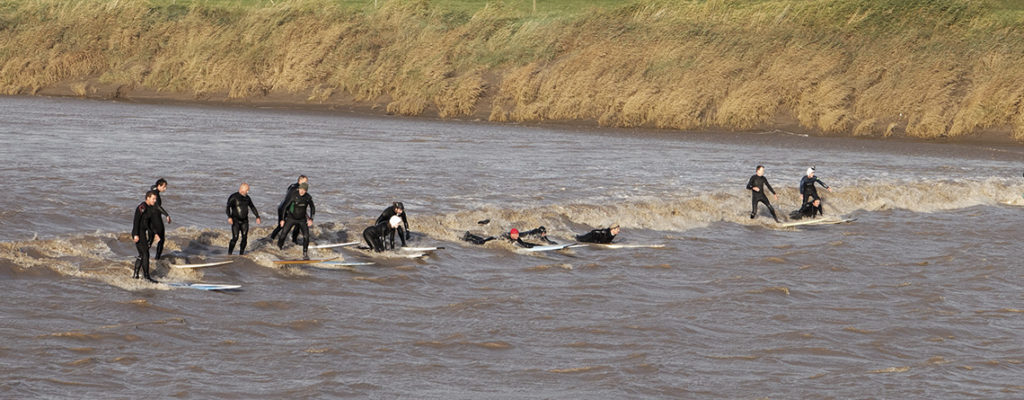Some of the highest tides in the world occur in the UK, leading to the formation of tidal bores: a line of surf or waves travelling upstream against the river flow. Indeed, of the hundred or so worldwide, about twenty are found in the UK’s estuaries, from Somerset to southwest Scotland and from East Anglia to the Humber Estuary.
The largest and most famous is the Severn Bore and in the right conditions attracts large crowds of spectators to watch surfers and canoeists try their luck. However, most others are smaller affairs unsuited to such outdoor pursuits, although still wonderful to see, such as the Arnside Bore and the Mersey Tidal Bore.
Tidal bores occur when the incoming tide is funnelled into the narrow space of an estuary. Wading birds often give the first sign of a tidal bore’s approach as they leave the sands and mudflats to fly to their high tide roosts. With luck, birdwatchers and photographers may even be able to see spectacular aerial displays known as murmurations, in which birds twist and turn as if fleeing from a predator. On calm wind days, there may also be a distant roar of breaking waves and surf.
On the best days, as the tidal bore passes there is a line of surf and a series of waves may follow, known as whelps. Some can travel a long way inland, such as the Trent Aegir, which reaches Gainsborough, and the Mersey tidal bore, which ends on hitting a weir near the centre of Warrington. Both towns are more than 20 miles from the coast.
In some estuaries, the best time to see tidal bores is on a few days around the highest spring tides, particularly around the Spring and Autumn equinoxes. For others, though, tidal bores occur in most months of the year. The timing also depends on a number of factors, including wind conditions, the river flow, and the distance from the coast.
Before going out, some research is therefore needed, including checking tide times. However, as with many natural phenomena, prediction is not an exact science, so sometimes no wave occurs. For onlookers, though, there is still the spectacle of the rush of the incoming tide, which can reach several miles per hour in some places.
Given how quickly levels can rise, it is important to consider your safety, keeping off the sands, mudflats and saltmarsh and watching from locations above any conceivable flood level, which will not be cut off from behind by the tide. The RNLI website has some good advice on the risk from the tides and tales of dramatic rescues of people and dogs from the sands and mudflats.
Tidal bores of England, Scotland and Wales If you would like to read more about tidal bores, I published an ebook featuring ten around the UK, including the Severn Bore, Trent Aegir, Arnside Bore and Nith Tidal Bore. It also describes why tidal bores occur and gives tips on how to find out tide times and improve your chances of seeing one, and ideas for local touristic, historic and wildlife sightseeing in the area.

